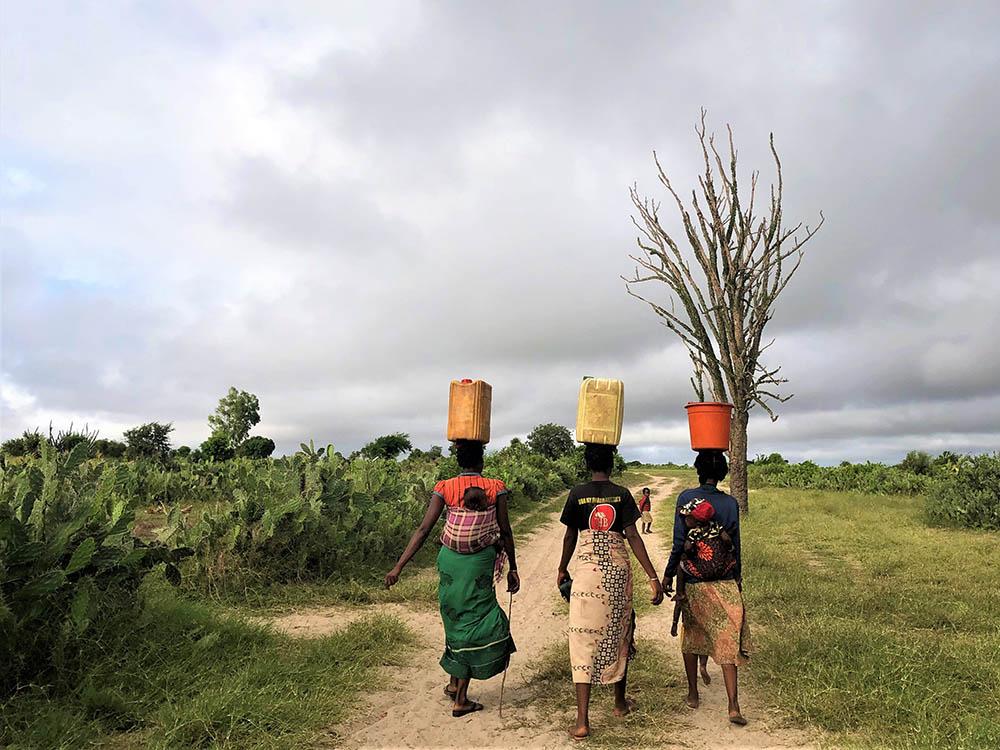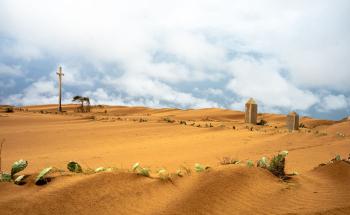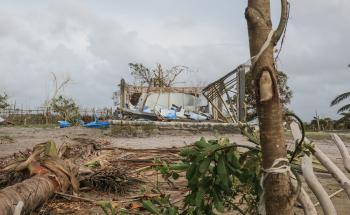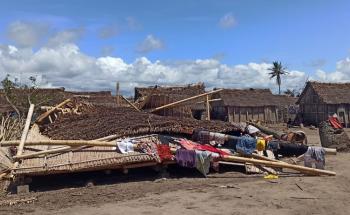Obtaining water for drinking, cooking and washing is an everyday struggle for people in Madagascar’s Great South. Periods of drought – extremely frequent in this semi-arid region – compounded by lack of development, adapted infrastructure and climate change make accessing safe water more and more of a challenge. Getting from Ambovombe to Mandrare River, which still dried up only a few weeks ago, demands a long trek across Madagascar’s vast Great South along kilometres of sandy paths lined with cactuses, sisal fields and the occasional solitary baobab.
“I dug the riverbed with my hands to find a trickle of water,” says Claudine, squatting in the sand to wash a pan containing just a couple of inches of murky water.
Barely a drop of rain has fallen in three years and the region’s rivers and springs have dried up, severely compromising harvests. Last year saw yet another major nutrition crisis people call in their local language kéré, which translates as, ‘to be starving’.
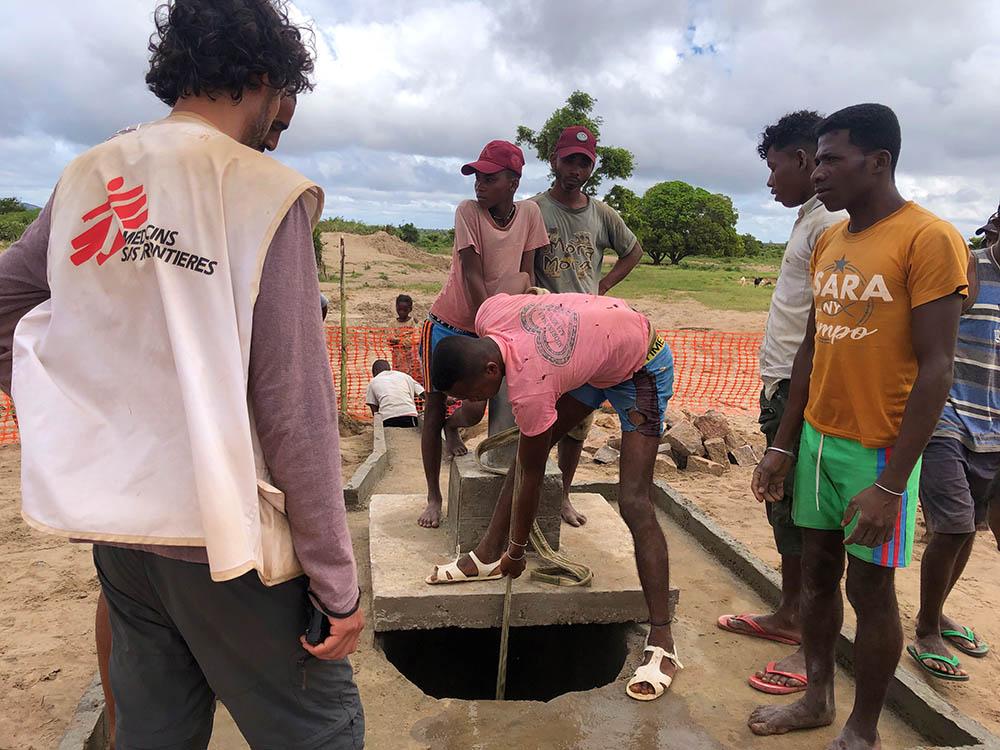
“As soon as I wake up I have to go and look for water,” Claudine continues while tidying away her belongings. “There’s no well in our village, so sometimes I have to walk all day,” she says as she sets off. She hopes to get back to her village before dark so that she doesn’t cross paths with dahalos – zebu thieves in Madagascar’s Grand South who plunder and rape.
Like Claudine, women and girls from remote and isolated villages have to walk in the blazing sun for many hours, sometimes a whole day, to fill a 20-litre jerrycan they carry on their heads. Barely enough water to drink, cook and wash for three days.
In these extremely harsh conditions, the tiniest drop of water is a treasure. “We’re getting rainwater that collected in the trunk yesterday,” says Sahondra, holding her husband’s ladder while he climbs a baobab. Native to the region, giants like this one are hollowed out and used as rainwater reservoirs.
I’d never seen such a terrible drought, sometimes I didn’t wash for several weeks and I ate raw cassava. I had almost no water to drink.Sahondra
For many long months, she kept herself partially hydrated by eating plants with high water content, like prickly-pear cactus fruit. “I had to sell my cooking utensils in the market to pay for water,” she explains. During periods of drought, it can cost up to four times more to fill a can, forcing families to rely on brackish water they find in all too rare water holes. Unfit for human consumption, this exposes them to waterborne diseases like diarrhoea and hepatitis E.
Access to a water point can make a real difference in people’s lives
“In conditions like these, access to a water point can make a real difference to people’s lives,” explains Nicolas, MSF’s water, hygiene and sanitation engineer. Several times a week our teams and other humanitarian aid organisations deployed in the region distribute clean water in villages, repair water points and install new ones.
Operations and equipment are extremely costly and time-consuming to implement and maintain, which partly explains the total lack of infrastructure in some areas in the region. However, access to water is vital to the future of people in Madagascar’s Great South. According to the latest IPCC (Intergovernmental Panel on Climate Change) reports, between now and the end of the century periods of drought will intensify in southern Africa, and unless something is done to facilitate people’s access to water, trigger even more nutrition crises across the region.
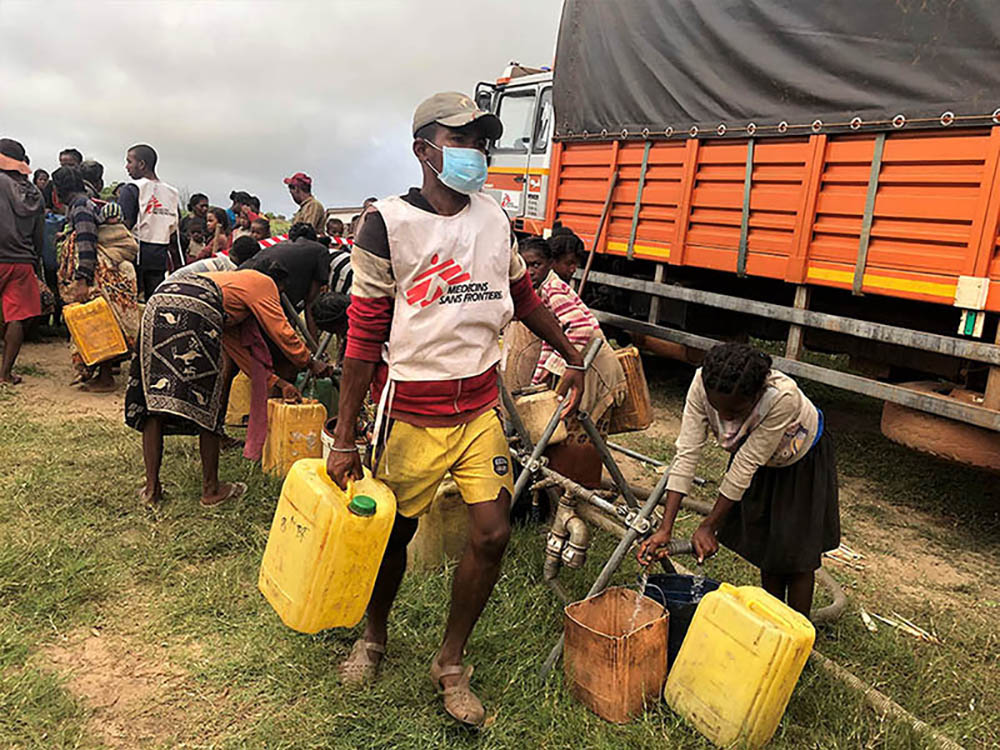
WHO estimates that by 2025 half of the world's population will live in water-scarce areas, creating tension and conflict. In the face of such an uncertain future, developing sustainable water and sanitation infrastructure is an essential and effective way to improve the living conditions and health of the vulnerable inhabitants of Madagascar's Great South.
The rain in the wake of the cyclones that struck the east of the country between January and March has helped revive somewhat the Mandrare River. “But it’s temporary," Sahondra reminds us, "because in late April the dry season arrives – right when it’s time to harvest.”
